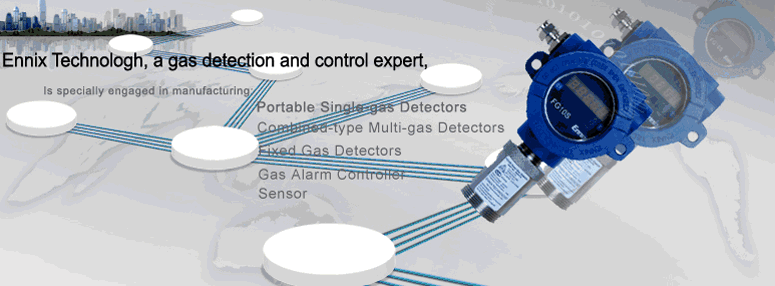|
|
|
 |
|
| |
l The instrument can be equipped with dozens of kinds of sensors such as electrochemical, catalytic, non-dispersive infrared (NDIR) and photo-ionization detector (PID) sensors in order to meet users’ different demands;
l The instrument can not only display the concentration of a dangerous gas in real time but also calculate the TWA and STEL values of a toxic gas and display the results on the LCD as per corresponding instructions;
l The instrument possesses analog, digital and on/off signal outputs simultaneously;
l The ultra-large LCD screen is equipped with ultra-bright backlight, convenient for reading;
l Its Protection Classification can exceed IP66;
l One key recovery function enables you to not worry about wrong operations. |
|
Part No.
|
90005000-B1
|
|
Gas Detected
|
Methane, CH4
|
|
Sampling Method
|
Diffusion
|
|
Gas Sensor
|
Infrared
|
|
Measure Range
|
(0~5%, 100%)Vol.
|
|
Resolution
|
0.01% Vol. or 0.1% Vol.
|
|
Response Time
|
Less than 30 seconds
|
|
Power Supply
|
Voltage: (15~30)VDC, electricity: 80mA
|
|
Electric Interface
|
3/4’’NPT
|
|
Display
|
Displayed with large screen LCD
|
|
Alarm method
|
3-LED lights alarms
|
|
Signal Output
|
Analog signal(4~20)mA, loading resistance: 500Ω
|
|
Digital signal RS485 ModBus RTU communication protocol
|
|
On/off signal: 3 relays
|
|
Wiring Method
|
Triple wire system; Power, GND, Signal
|
|
Protection Classification
|
IP66
|
|
Environment Temperature
|
-20℃~ 50℃
|
|
Environment Humidity
|
15%~ 95% relative humidity (standard)
|
|
Explosion-Proof
|
Ex d IIC T6
|
|
Size
|
209mm*133mm*110mm (length*width*height)
|
|
Weight
|
2.2 kg
|
|
Materials of the cases
|
Casting aluminum and stainless steel
|
|
Methane is a chemical compound with the chemical formula CH4. It is the simplest alkane, the main component of natural gas, and probably the most abundant organic compound on earth. The relative abundance of methane makes it an attractive fuel. However, because it is a gas at normal conditions, methane is difficult to transport from its source.
Safety
Methane is not toxic; however, it is extremely flammable and may form explosive mixtures with air. Methane is violently reactive with oxidizers,halogens, and some halogen-containing compounds. Methane is also an asphyxiant and may displace oxygen in an enclosed space. Asphyxia may result if the oxygen concentration is reduced to below about 16% by displacement, as most people can tolerate a reduction from 21% to 16% without ill effects. The concentration of methane at which asphyxiation risk becomes significant is much higher than the 5–15% concentration in a flammable or explosive mixture. Methane off-gas can penetrate the interiors of buildings near landfills and expose occupants to significant levels of methane. Some buildings have specially engineered recovery systems below their basements to actively capture this gas and vent it away from the building. |
|
|
|


